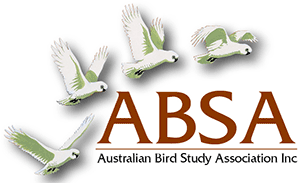Importance of ‘pre-adaptation’, consumer opportunism and limited interference competition in facilitating urban living by exotic Common Mynas
| Posted: |
05/06/2016 |
| Author(s): |
Alan Lill, Sophie Meles-Taberner |
Introduced Common Mynas
Sturnus tristis, are abundant in many eastern Australian cities, towns and adjacent rural (exurban) areas. They are widely considered to be pests, because they nest in house roofs, form noisy roosting aggregations, may spread human pathogens and allegedly negatively impact upon native birds through competition for food and nest sites. To test the latter allegation adequately, we need further investigation of the species’ ecology, particularly in cities. To that end, this study documents aspects of Common Mynas’ ecology in Melbourne, Australia and its exurban hinterland in the non-breeding season. Common Mynas’ diet and foraging ecology were similar in Melbourne and the adjacent exurban environment. Collectively, in both environments, one or more other bird(s) foraged less than, or within, five metres of a focal foraging myna more than 90 percent of the time, but in the entire study only five aggressive encounters involving foraging Common Mynas occurred during direct observation (0.74 encounters/observation hr). All these encounters occurred in the city, but only two of them were with heterospecifics. The abundance of Common Mynas appeared to be similar in urban and exurban environments in the subset of habitats surveyed. Myna abundance was negatively correlated with the presence of native Noisy Miners
Manorina melanocephala and
Eucalyptus and
Corymbia trees, but positively associated with the presence of exotic trees. We propose that the Common Myna’s successful exploitation of urban food resources in Australia stems from a combination of ‘pre-adaptation’, some opportunistic consumer innovation with respect to human food waste and a low level of interspecific interference competition for food. Planting more native trees in the urban environment might ultimately make Australian cities less hospitable for Common Mynas, but also probably more hospitable for Noisy Miners.
>> Download Abstract |
File Size: 318KB
>> Download Complete PDF | File Size: 524 KB
